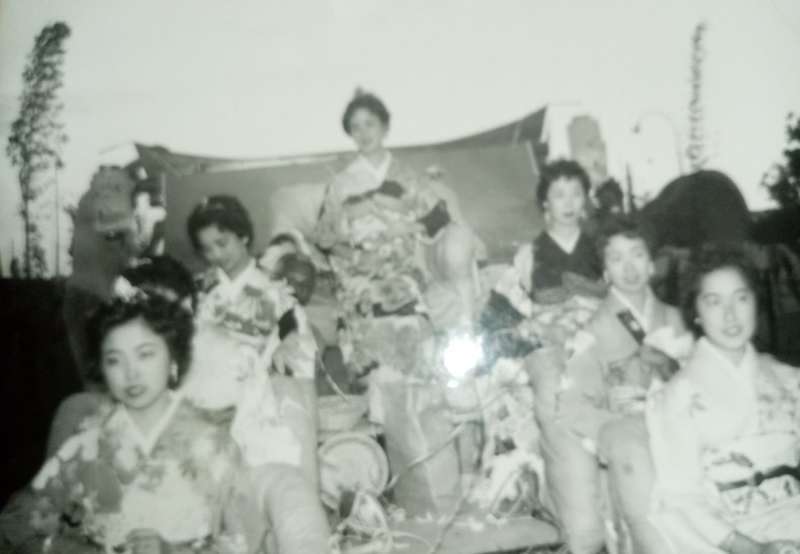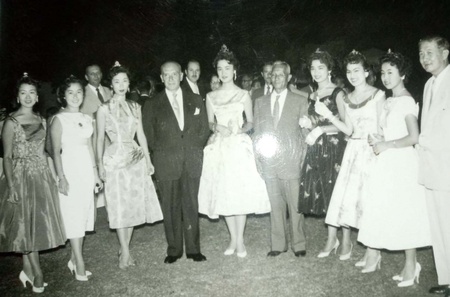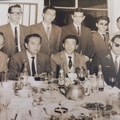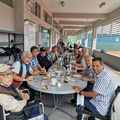“Let's all laugh and enjoy, let's all enjoy the carnival, mascaritas let's dance with a triumphant rhythm. Let's rejoice Viceregal Lima, our Queens will have fun, and their laughter will cheer us up at the carnival. Carnival, carnival! is the general cry. Carnival, carnival, what unparalleled joy!”
The past is a party linked to the carnival. Who as a child has not played with sprinkles, talcum powder, streamers, pica pica, scratch scratch, balloons and the bucket of water? Carnival is a game that as children made us see respect in others. “I'm not playing, I'm just passing through!” And the man passed without being wet. Years later, everything changed. It was a quarantine for those who did not want to play and delirium for all of us who, having permission, went from any angle to waste water, balloons, bitumen and anything else we could paint and stain.
Soichi Yanahura was three years older than me and we both went straight to a place called Martineti. I was six years old at the time and the train lines were in the background. The famous dump gave us the opportunity to assemble our torpedoes during the carnival. Those that were thrown as part of the game and where the scented talcum powder matched the flour that was always in the kitchen. The two ends needed cardboard and in that municipal dump some nearby printing press threw away their waste in stationery and the magic of summer made us see that this would be used for the precious torpedoes.
Two years later he was a resident in the city of Jauja. Everything changed suddenly in that month of November 1948. A sudden trip and a stay that I had to get used to anyway. Carnivals were different from then on. Having to forget that the tub did not have the same service and understand that the climate of Jauja was not the most conducive for a bucket of water, much less for a bath in a marble tub. Due to the cold and frost, the mountains did not lend themselves to that type of game and only balloons with a certain aniline were projectiles that sought out the female sex. The biggest carnival game was presented at the Colonial Theater Cinema.
There it was not interesting what movie they showed but rather the intermission of the show. After the newscasts and short commercials, the lights turned on and the catchy carnival song blared from their speakers. The gallery, balcony or cazuela, whatever they wanted to call it, was the favorite place to throw the torpedoes, launch the pike and throw the streamers. In a minute, the theater room had a white and perfumed atmosphere, the halls of the room were a revelry. The girls also had their own thing, they came with their masks in their purses and certain things from the Colombina or Pierrot brands with their cardboard case.
Fifteen minutes of intermission and the Colonial Theater room continued with the mist and melody of the carnival. At the first warning to turn off the light to start the film, the gallery thundered with more streamers, the torpedoes continued arriving at their destination and the room was once again filled with a dense fog of scented talcum powder. The operator only had to extend the intermission for five more minutes and the cheers and shouting continued. Twenty minutes and the movie definitely began, the projection beam was an immense column of which everyone in the gallery put their hands and the whistles were a clear response to our first day of carnival. There were two more days left, not counting Ash Wednesday.
The small city of Jauja was my childhood world, walking through its streets was as if one were walking along a dirt and cement path. The water basins formed small puddles and were, during the days of the carnival, the fountain worthy of filling the balloons or having on hand the first pot stolen from the home. What we did feel was that the little ladies were conspicuous by their absence and that the rain was a curtain to cling more to the walls of their sleepy houses that dozed in that childish world of my steps through the city. There were so many happy moments and even today my vision tends to cry in solitude.
My last year in Jauja, and already at twenty years old, I decided, as I had never done before, to dance in a “corta monte” in the city. My last year, I told myself. And I looked for a jaujina as a partner. That day, as the group of dancers passed through the doors of the restaurant, my rhythm with my partner was so accentuated that the waiters and cooks came out to watch. I feinted and when I turned around with my partner I almost fell to my knees. The laughter was total and the shame of dancing for the first time in the street made me feel that the tree that afternoon would be mine as I felled it with the first blow of an ax that hit me after my partner. Then I became aware and regretted it, since if I cut down the tree next year I would be the godfather and would bear the greatest expense.
Jauja was perhaps in those times the Andean city with the most festivals on the calendar and with an impressive record for beer consumption. The newspaper La Prensa at that time, on its provinces page, published an article mentioning the cities with the most beer consumption during the carnival season. Lima and Callao were the two cities in the first places, then came Jauja. Incredible for such a small city. But that's how the Jaujinos were when they celebrated their festivals, they forgot everything except having fun. And I was that afternoon with my bottle of beer in hand and with my pretty countrywoman dancing my huayno through the streets. The band of musicians behind us was the follower of the entire group, who carried the rhythm, the folklore, the passion and the encounter with the tree covered with gifts and streamers in the small square of the La Libertad neighborhood.
In that decade, Jauja had two Nikkei Queens at its Carnival parties. Benigna Higuchi was crowned at a Carnival Dance in the city casino and, years later, Margarita Higa, at the Nisei Jauja Club. It was the year 1959 when the Nisei Huancaínos, in a packed bus, were present at our carnival party, accompanied by Mr. Víctor Aritomi, president of the Nisei Huancayo National Association, and where, among others, the Queens of Huancayo: ladies Guillermina Uchida and Teresa Nakahodo. It was an unforgettable night in the Nikkei community of the two cities. A brotherhood that lasted for many years between the two provinces of the Mantaro Valley.
A few days ago, through WhatsApp, my friend, Mrs. Rosa de Nomura, sent me a video that made me remember the month of carnivals and a note where she named the Carnival Queens of the fifties and sixties, the Corsicans of that time and the contests to choose the queens. Giuliana D'Onofrio, Bebelu de la Borda, Ena Hilbeck and the beautiful queens and ladies of the community Teresa Shimazaki, Bertha Shirasaka, Juana Nakamoto, among other ladies of yesteryear.
Today, when I look out onto my balcony, the Moon hides her gaze from me with a part of her face. The silence is complete on this pandemic night and the AELU trees look distant to me. But in my imagination I put streamers, dolls, inflated balloons, packages of candy, chocolates and cookies, keychains and more streamers so that it shows that it is carnival. I imagine that the godmother will have the ax to put her bow on it and that the “Los Aborrecidos del Mantaro” orchestra will play the chords of a huayno of the time. The sun will set on a mountain afternoon and the dancing couples will stick the ax into the bark of the tree, drop by drop, the sap will spread, while the earth is injected with beer and sweat.
And when the night is approaching, the tree bows its branches, the crowd shouts its gifts, the godfather gives his soul to the ungainly stem and, like someone cutting the umbilical cord, the tree in its agony falls face down into the earth. The night will have ended its third day of carnival. Tomorrow will be Ash Wednesday.
© 2021 Luis Iguchi Iguchi








